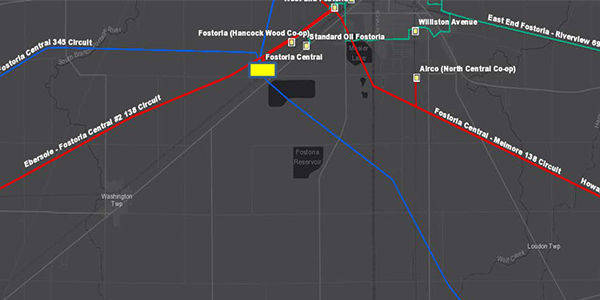FERC on Thursday largely accepted PJM’s Order 845 compliance filing addressing concerns over a lack of transparency regarding contingent facilities (ER19-1958).
Contingent facilities are unbuilt interconnection facilities and network upgrades upon which an interconnection request’s costs and timing are dependent.
In December, FERC approved six of PJM’s 10 Order 845 proposals, requiring changes on four issues. A Feb. 21 filing by the RTO sought to address the commission’s concerns by clarifying the scope of the study and the criteria used and also clarified that studies for provisional interconnection service will be conducted annually.
Thursday’s order accepted PJM’s filing on three of the four issues that required changes, including: revisions regarding contingent facilities; provisional interconnection service that allows limited operation of a generating facility prior to completion of the full interconnection process; and rules governing technology changes that can be considered without affecting the interconnection customer’s queue position. All three revisions are to go into effect July 20.
FERC’s December order also required PJM to conduct the surplus interconnection service process outside of the interconnection queue. Surplus service is any unused portion of interconnection service established in a large generator interconnection agreement.
PJM’s revisions required that surplus service be only from in-service generators and that use of the service cannot impact the existing system or other queue projects as determined by load flow or short-circuit and stability analyses. Applicants will be required to make a study deposit of $10,000 plus $100/MW, not to exceed $110,000.
The American Wind Energy Association, Solar Energy Industries Association and the Solar Council, filing jointly, challenged PJM’s revisions on the surplus interconnection study, saying that they did not specify whether a surplus interconnection customer will receive a refund for the unused portion of its deposit if an application is rejected or withdrawn.
FERC agreed with the groups’ comment, writing that PJM needed to add language to provide for refunds. It directed PJM to submit a compliance filing within 120 days and make the surplus interconnection service effective Nov. 17.
“We find PJM’s proposed effective date reasonable, given the software and manual changes PJM needs to make before implementing these compliance requirements,” FERC wrote.
Rehearing Denied
FERC also rejected a rehearing request filed Jan. 21 by Leeward Renewable Energy challenging its December order. Leeward argued that FERC had failed to address whether PJM can reject an interconnection customer’s “technological advancement request” as constituting a material modification without any review or analysis.
Leeward cited a proposed Ohio wind project that it wanted to convert to a solar project in response to state legislation that nearly tripled the minimum property line setback for wind turbines. Leeward said PJM judged the change a material modification — forcing the developer to relinquish its queue position and file a new interconnection request without reviewing studies, which the company said is contrary to Order 845 and the RTO’s Tariff.
PJM said the commission in Order 845 stated that “a change between wind and solar technologies involves a change in the electrical characteristics of an interconnection request.”
Leeward responded that although Order 845 found that a change between wind and solar technologies cannot automatically be considered a permissible technological advancement, such a change should not be automatically considered a material modification and that transmission providers should be required to evaluate such changes.
In denying rehearing, the commission said that interconnection customers seeking to enter the technological change procedure must demonstrate that the proposed change results in “equal to or better” electrical performance. “Should it fail to do so, such a proposed change should proceed through the material modification procedures,” FERC said.
The commission said PJM’s February compliance filing proposed a new procedure for responding to requests to modify interconnection request to include a technological advancement.
“In light of our discussion above, accepting PJM’s new Tariff section 36.2A.2.2 and reminding PJM of its obligation to provide an explanation if it cannot accommodate a proposed technological advancement without triggering the material modification provisions, we find that Leeward’s concerns regarding technological advancement requests raised on rehearing have been addressed and, thus, are moot,” FERC said.




